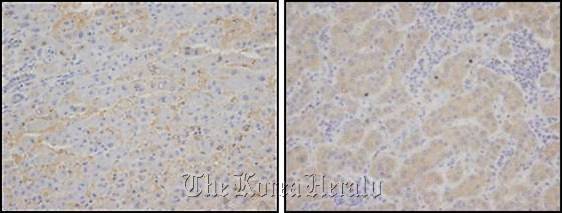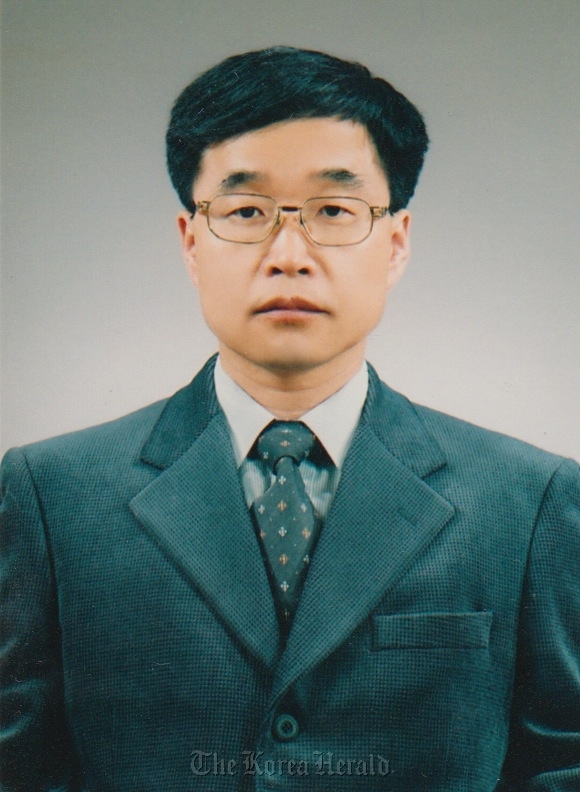Discovery could open new possibilities for treatment methods
Cancer is one of the most prevalent chronic health conditions in the world, and affects millions of people across the globe each year.
According to one estimate, as many as 12.7 million people developed cancer in 2008 alone, and 7.6 million people are thought to have succumbed to cancer in that year.
Korea had the world’s 24th-highest cancer frequency in 2008 for both sexes, according to the World Cancer Research Fund International.
One of the major problems in treating cancer is presented by cancer cells’ ability to move to and invade parts of the body unaffected in the original incident.
Cancer is one of the most prevalent chronic health conditions in the world, and affects millions of people across the globe each year.
According to one estimate, as many as 12.7 million people developed cancer in 2008 alone, and 7.6 million people are thought to have succumbed to cancer in that year.
Korea had the world’s 24th-highest cancer frequency in 2008 for both sexes, according to the World Cancer Research Fund International.
One of the major problems in treating cancer is presented by cancer cells’ ability to move to and invade parts of the body unaffected in the original incident.

A recent discovery by a team of scientists, however, could bring significant changes in how these aspects of cancer are dealt with.
The team, led by professor Yoo Young-do of Korea University’s Graduate School of Medicine and in collaboration with the Korea Institute of Radiological and Medical Science’s Lee Ki-ho, discovered a new protein that may hold a key to suppressing cancer growth, and transfer and invasion of healthy tissues by cancerous cells.
The team looked at tissues from 96 liver cancer patients and found that 60.5 percent had elevated levels of reactive oxygen species modulator 1, or Romo 1, protein.
The team also found that over-expression of Romo 1 increased the amount of reactive oxygen species, which in turn caused tumors to develop faster and aided cancer cells in spreading to other parts of the body.
In experiments with mice, the team was able to slow tumor growth and reduce the likelihood of cancer spreading by suppressing Romo 1.
“We were the first to isolate the protein, and we are now working on the function of the protein,” Yoo said.
“Until now the sequence of the gene for Romo 1 was known but we are the first to find the protein and discover its relevance in cancer progression, specifically in cancer cells’ invasive characteristics.”
Found in the mitochondria, Romo 1 is thought to play a role in producing reactive oxygen species, which are highly reactive compounds containing oxygen molecules or oxygen ions.
A mitochondrion is an organelle ― a compartment within the cell with a specific function ― that plays an essential role in metabolism.
While reactive oxygen species are a natural byproduct of the body’s metabolism, and are used in specific cell-signaling mechanisms in small quantities, they can damage cell organelles and DNA, if they are allowed to build up.

Yoo and his team were also able to discover that applying chemical stress to cells led to Romo 1 being over-expressed.
“We used many different chemicals and found four that increased Romo 1 expression, but this is only the beginning,” he said.
“How the protein produces reactive oxygen species, and why it is over-expressed in response to chemical stress are just few of the things we need to study further.”
In another research project still underway, the team also found that over-expression of Romo 1 is not limited to liver cancer.
While the team still needs to uncover Romo 1’s function in healthy cells and its structure, Yoo says that the discovery could have far-reaching implications for cancer patients.
“The first thing we have to do is identify the protein’s structure. Then we plan to develop compounds that can limit Romo 1’s activity to slow tumor growth and stop cancer from progressing,” Yoo said.
“There is no medicine that is 100 percent effective, and the drug (targeting Romo 1) could be used in combination with existing drugs to dramatically increase the survival rate of cancer patients.”
As with the process of discovering the protein, Yoo says that developing a cancer drug targeting Romo 1 will be a time-consuming process.
Yoo estimates that two to three years will be required for identifying Romo 1’s structure, and another three to four years to develop candidate compounds for manipulating the protein’s functions. In all, Yoo said that as many as 10 years may be needed before clinical trials for a drug developed through their study can begin.
Yoo, who has been involved in cancer-related research for more than 18 years, began searching for genes that play a role in cancer drug resistance more than 12 years ago.
He began with 400 candidate genes and narrowed his search down to 20. By studying each gene’s functions he was able to identify Romo 1.
Regarding other non-cancer-related applications for the discovery, Yoo says that Romo 1 could have many applications.
“There are other diseases that have connections to the mitochondria including diabetes, Alzheimer’s and ischemic diseases,” Yoo said. An ischemic disease refers to conditions caused by disruptions in blood flow such as heart attacks.
“I am considering possible collaborations regarding other diseases once the structure is fully known. That is not to say that there is a definite possibility of treating diseases ― this is the first step.”
By Choi He-suk (cheesuk@heraldcorp.com)
-
Articles by Korea Herald



















